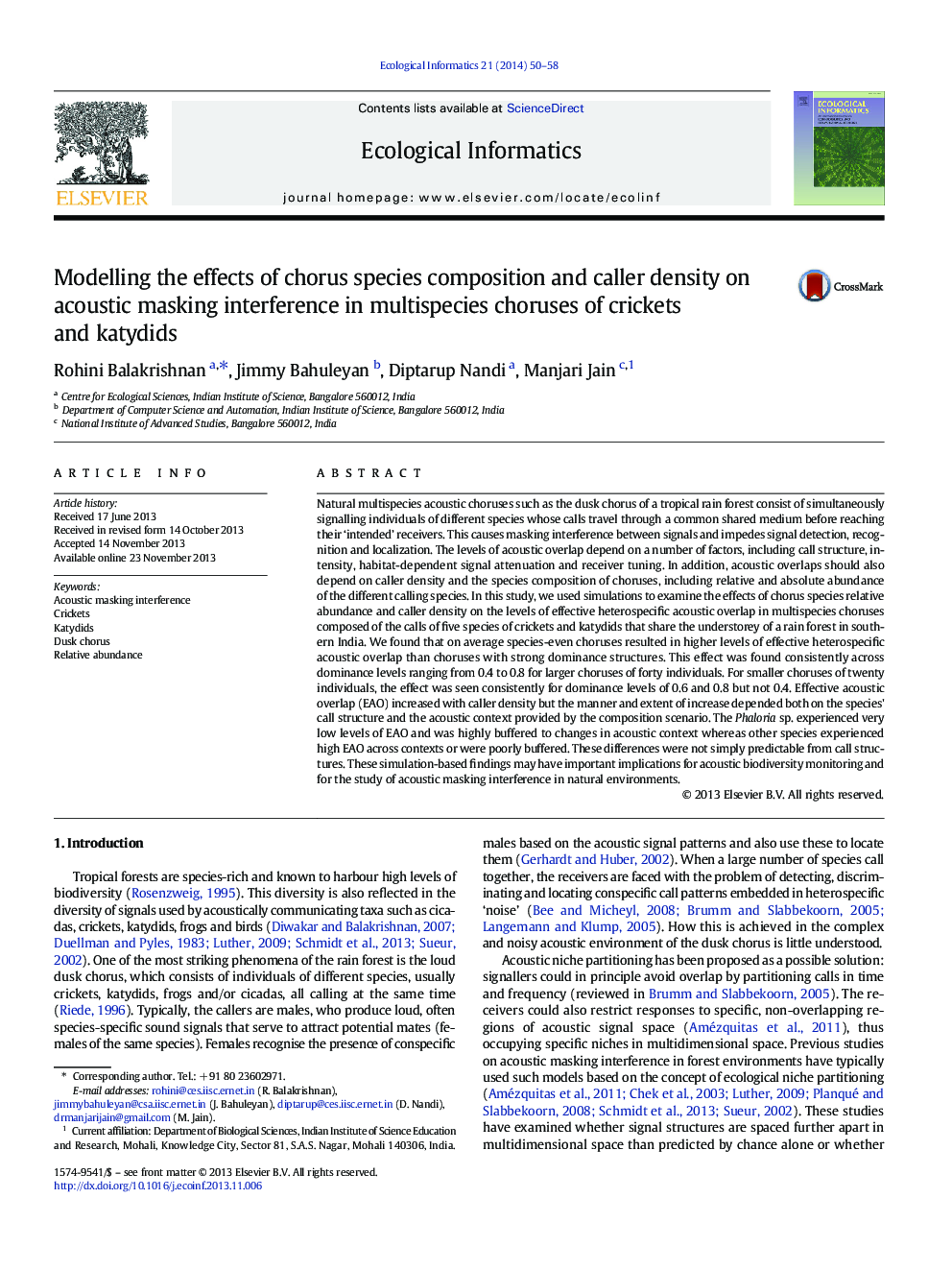| کد مقاله | کد نشریه | سال انتشار | مقاله انگلیسی | نسخه تمام متن |
|---|---|---|---|---|
| 4374895 | 1617211 | 2014 | 9 صفحه PDF | دانلود رایگان |
عنوان انگلیسی مقاله ISI
Modelling the effects of chorus species composition and caller density on acoustic masking interference in multispecies choruses of crickets and katydids
ترجمه فارسی عنوان
مدل سازی اثرات ترکیب کور و چگالی تماس گیرنده بر تداخل پوشش های صوتی در کرم های مختلف کریکت و کتیدید
دانلود مقاله + سفارش ترجمه
دانلود مقاله ISI انگلیسی
رایگان برای ایرانیان
کلمات کلیدی
تداخل ماسک آکوستیک، کریکتس، کیتیدید، کریسمس شب یلدا، فراوانی نسبی،
موضوعات مرتبط
علوم زیستی و بیوفناوری
علوم کشاورزی و بیولوژیک
بوم شناسی، تکامل، رفتار و سامانه شناسی
چکیده انگلیسی
Natural multispecies acoustic choruses such as the dusk chorus of a tropical rain forest consist of simultaneously signalling individuals of different species whose calls travel through a common shared medium before reaching their 'intended' receivers. This causes masking interference between signals and impedes signal detection, recognition and localization. The levels of acoustic overlap depend on a number of factors, including call structure, intensity, habitat-dependent signal attenuation and receiver tuning. In addition, acoustic overlaps should also depend on caller density and the species composition of choruses, including relative and absolute abundance of the different calling species. In this study, we used simulations to examine the effects of chorus species relative abundance and caller density on the levels of effective heterospecific acoustic overlap in multispecies choruses composed of the calls of five species of crickets and katydids that share the understorey of a rain forest in southern India. We found that on average species-even choruses resulted in higher levels of effective heterospecific acoustic overlap than choruses with strong dominance structures. This effect was found consistently across dominance levels ranging from 0.4 to 0.8 for larger choruses of forty individuals. For smaller choruses of twenty individuals, the effect was seen consistently for dominance levels of 0.6 and 0.8 but not 0.4. Effective acoustic overlap (EAO) increased with caller density but the manner and extent of increase depended both on the species' call structure and the acoustic context provided by the composition scenario. The Phaloria sp. experienced very low levels of EAO and was highly buffered to changes in acoustic context whereas other species experienced high EAO across contexts or were poorly buffered. These differences were not simply predictable from call structures. These simulation-based findings may have important implications for acoustic biodiversity monitoring and for the study of acoustic masking interference in natural environments.
ناشر
Database: Elsevier - ScienceDirect (ساینس دایرکت)
Journal: Ecological Informatics - Volume 21, May 2014, Pages 50-58
Journal: Ecological Informatics - Volume 21, May 2014, Pages 50-58
نویسندگان
Rohini Balakrishnan, Jimmy Bahuleyan, Diptarup Nandi, Manjari Jain,
